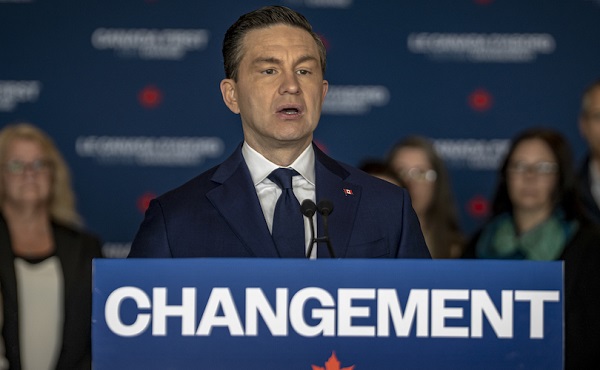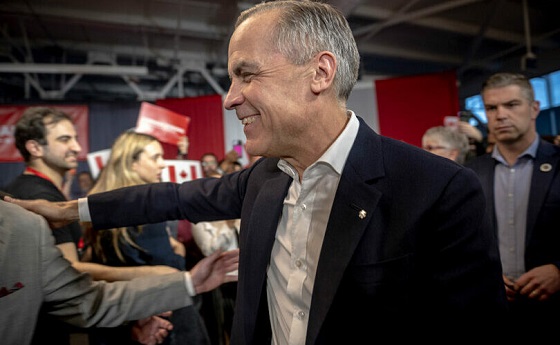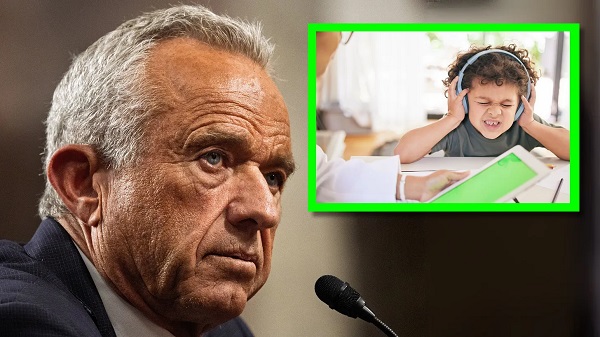Alberta
Nominations open for Alberta’s most prestigious (and lucrative) arts award(s)

Alberta has amazing artists! If you know someone deserving, then don’t let this chance get away on you. Nominations are now open for the 2019 Lieutenant Governor of Alberta Distinguished Artist Awards. These are Alberta’s most prestigious artistic award, and 3 recipients will each receive a $30,000 cash prize.
Alberta artists (from all disciplines) and those now working elsewhere, but maintaining a strong connection to Alberta, are eligible and anyone may nominate through a simple online process, see link below.
Here is a list of Distinguished Artists already awarded: John Estacio (music – composer); Alice Major (literary arts); Alex Janvier (visual arts); Frances Ginzer (music); Ronnie Burkett (theatre arts); Peter von Tiesenhausen (visual arts); Old Trout Puppet Workshop (theatre arts); Aritha van Herk (literary arts); Robert Kroetsch (literary arts); Jane Ash Poitras (visual arts); Joan Stebbins (visual arts – curator); Rudy Wiebe (literary arts); Greg Hollingshead (literary arts); One Yellow Rabbit (theatre arts); Isobel and Tom Rolston (music); Douglas Cardinal (architecture); John Murrell (theatre arts – playwright).
The 2019 recipients will receive their $30,000 awards from the award’s patron, the Lieutenant Governor of the Province of Alberta, at a celebration in Maskwacis, Alberta on Saturday, September 21, 2019.
The nomination process closes midnight, March 31, 2019. Click here to nominate someone.
Nominations for the 2019 Lieutenant Governor of Alberta Distinguished Artist Awards can be submitted on-line until March 31, 2019.
To prepare for the nomination:
* Ensure the nominee is a Canadian citizen, lives in Alberta, or has had a significant connection to Alberta over time.
* Speak to your nominee, let them know you will be nominating them, ask for a current CV and their complete contact information.
* Write a document of no more than three pages, single spaced, explaining why this nominee merits Alberta’s top recognition for artistic achievement. Include highlights of the nominee’s artistic achievements and/or their contribution to advancing their artistic discipline. If the nominee does not currently reside in Alberta, clearly outline their connection to Alberta and their contribution to growing our province’s arts and culture.
Fill out the contact information online and upload the nomination and CV documents.
About the Awards: The Lieutenant Governor of Alberta Arts Awards Foundation was established in 2003 to celebrate excellence in the arts and to underline the importance of the arts in Alberta. The Foundation administers two programs of awards to Alberta artists.
The Distinguished Artist Awards program gives up to three awards of $30,000 each in recognition of outstanding achievement in the arts by Albertans or significant contribution to the arts in Alberta.
The Emerging Artist Awards program gives up to ten awards of $10,000 each to support and encourage promising artists early in their careers, who have created a modest body of work, and are recognized by established artists in the same field of artistic endeavour as having potential to achieve excellence in their discipline.
The Awards Programs of the Foundation were established under the founding patronage of The Late Honourable Dr. Lois E. Hole, C.M., A.O.E., Lieutenant Governor of Alberta from 2000 – 2005, and continue under the patronage of His Honour Col. (Ret’d) the Honourable Donald S. Ethell, OC, OMM, AOE, MSC, CD, Lieutenant Governor of Alberta.
Alberta
Red Deer Justice Centre Grand Opening: Building access to justice for Albertans

The new Red Deer Justice Centre will help Albertans resolve their legal matters faster.
Albertans deserve to have access to a fair, accessible and transparent justice system. Modernizing Alberta’s courthouse infrastructure will help make sure Alberta’s justice system runs efficiently and meets the needs of the province’s growing population.
Alberta’s government has invested $191 million to build the new Red Deer Justice Centre, increasing the number of courtrooms from eight to 12, allowing more cases to be heard at one time.
“Modern, accessible courthouses and streamlined services not only strengthen our justice
system – they build safer, stronger communities across the province. Investing in the new Red Deer Justice Centre is vital to helping our justice system operate more efficiently, and will give people in Red Deer and across central Alberta better access to justice.”

Government of Alberta and Judiciary representatives with special guests at the Red Deer Justice Centre plaque unveiling event April 22, 2025.
On March 3, all court services in Red Deer began operating out of the new justice centre. The new justice centre has 12 courtrooms fully built and equipped with video-conference equipment to allow witnesses to attend remotely if they cannot travel, and vulnerable witnesses to testify from outside the courtroom.
The new justice centre also has spaces for people taking alternative approaches to the traditional courtroom trial process, with the three new suites for judicial dispute resolution services, a specific suite for other dispute resolution services, such as family mediation and civil mediation, and a new Indigenous courtroom with dedicated venting for smudging purposes.
“We are very excited about this new courthouse for central Alberta. Investing in the places where people seek justice shows respect for the rights of all Albertans. The Red Deer Justice Centre fills a significant infrastructure need for this rapidly growing part of the province. It is also an important symbol of the rule of law, meaning that none of us are above the law, and there is an independent judiciary to decide disputes. This is essential for a healthy functioning democracy.”
“Public safety and access to justice go hand in hand. With this investment in the new Red Deer Justice Centre, Alberta’s government is ensuring that communities are safer, legal matters are resolved more efficiently and all Albertans get the support they need.”
“This state-of-the-art facility will serve the people of Red Deer and surrounding communities for generations. Our team at Infrastructure is incredibly proud of the work done to plan, design and build this project. I want to thank everyone, at all levels, who helped make this project a reality.”
Budget 2025 is meeting the challenge faced by Alberta with continued investments in education and health, lower taxes for families and a focus on the economy.

Quick facts
- The new Red Deer Justice Centre is 312,000 sq ft (29,000 m2). (The old courthouse is 98,780 sq ft (9,177 m2)).
- The approved project funding for the Red Deer Justice Centre is about $191 million.
Alberta
CPP another example of Albertans’ outsized contribution to Canada

From the Fraser Institute
By Tegan Hill
Amid the economic uncertainty fuelled by Trump’s trade war, its perhaps more important than ever to understand Alberta’s crucial role in the federation and its outsized contribution to programs such as the Canada Pension Plan (CPP).
From 1981 to 2022, Albertan’s net contribution to the CPP—meaning the amount Albertans paid into the program over and above what retirees in Alberta received in CPP payments—was $53.6 billion. In 2022 (the latest year of available data), Albertans’ net contribution to the CPP was $3.0 billion.
During that same period (1981 to 2022), British Columbia was the only other province where residents paid more into the CPP than retirees received in benefits—and Alberta’s contribution was six times greater than B.C.’s contribution. Put differently, residents in seven out of the nine provinces that participate in the CPP (Quebec has its own plan) receive more back in benefits than they contribute to the program.
Albertans pay an outsized contribution to federal and national programs, including the CPP because of the province’s relatively high rates of employment, higher average incomes and younger population (i.e. more workers pay into the CPP and less retirees take from it).
Put simply, Albertan workers have been helping fund the retirement of Canadians from coast to coast for decades, and without Alberta, the CPP would look much different.
How different?
If Alberta withdrew from the CPP and established its own standalone provincial pension plan, Alberta workers would receive the same retirement benefits but at a lower cost (i.e. lower CPP contribution rate deducted from our paycheques) than other Canadians, while the contribution rate—essentially the CPP tax rate—to fund the program would likely need to increase for the rest of the country to maintain the same benefits.
And given current demographic projections, immigration patterns and Alberta’s long history of leading the provinces in economic growth, Albertan workers will likely continue to pay more into the CPP than Albertan retirees get back from it.
Therefore, considering Alberta’s crucial role in national programs, the next federal government—whoever that may be—should undo and prevent policies that negatively impact the province and Albertans ability to contribute to Canada. Think of Bill C-69 (which imposes complex, uncertain and onerous review requirements on major energy projects), Bill C-48 (which bans large oil tankers off B.C.’s northern coast and limits access to Asian markets), an arbitrary cap on oil and gas emissions, numerous other “net-zero” targets, and so on.
Canada faces serious economic challenges, including a trade war with the United States. In times like this, it’s important to remember Alberta’s crucial role in the federation and the outsized contributions of Alberta workers to the wellbeing of Canadians across the country.
-

 2025 Federal Election1 day ago
2025 Federal Election1 day agoStudy links B.C.’s drug policies to more overdoses, but researchers urge caution
-

 Business2 days ago
Business2 days agoChinese firm unveils palm-based biometric ID payments, sparking fresh privacy concerns
-

 2025 Federal Election2 days ago
2025 Federal Election2 days agoConservatives promise to ban firing of Canadian federal workers based on COVID jab status
-

 International2 days ago
International2 days agoPope Francis Got Canadian History Wrong
-

 2025 Federal Election1 day ago
2025 Federal Election1 day agoCarney’s Hidden Climate Finance Agenda
-

 2025 Federal Election1 day ago
2025 Federal Election1 day agoWhen it comes to pipelines, Carney’s words flow both ways
-

 Business1 day ago
Business1 day agoIs Government Inflation Reporting Accurate?
-

 2025 Federal Election2 days ago
2025 Federal Election2 days agoFormer WEF insider accuses Mark Carney of using fear tactics to usher globalism into Canada





